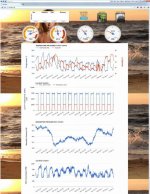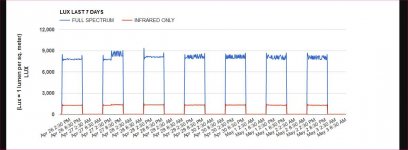Douglas.Curtis
Autistic Diplomat in Training
I've been using HPS lighting for over 15 years now and never really gave this question much thought. While I understand there are many types of 1000w HPS lamps available, I'm looking for a general average. Out of the 1000 watts powering a 1000w HPS lamp, approximately how many watts are converted directly to infra-red energy?
The second bonus question (no, I do not know the answer to either of these. I looked, but have not found it yet.) is, approximately how much of this infra-red is the average cannabis plant capable of converting to plant matter and cannabinoids/terpenes?
The second bonus question (no, I do not know the answer to either of these. I looked, but have not found it yet.) is, approximately how much of this infra-red is the average cannabis plant capable of converting to plant matter and cannabinoids/terpenes?








